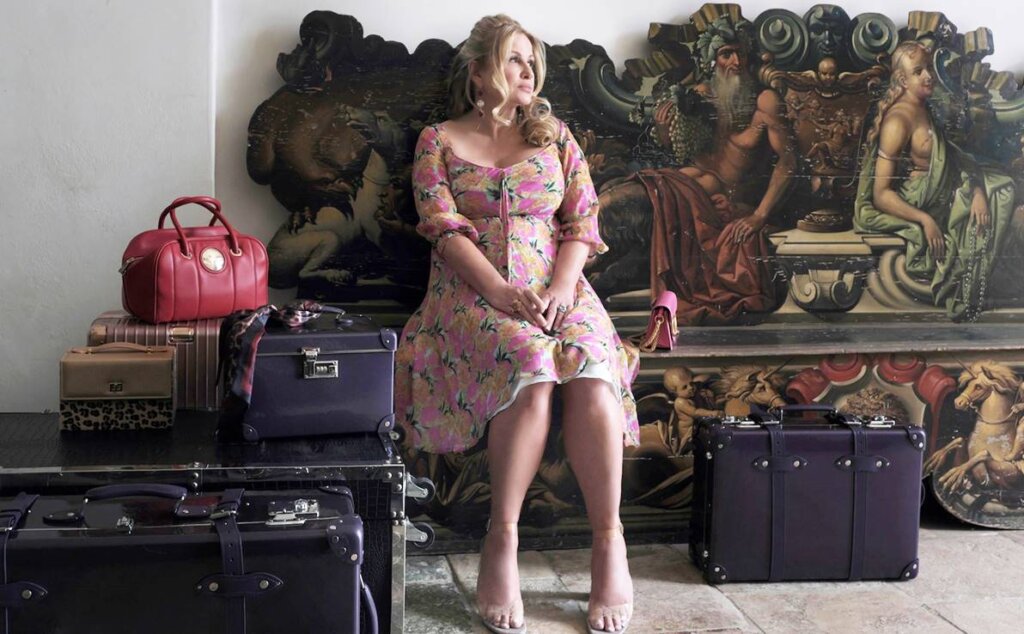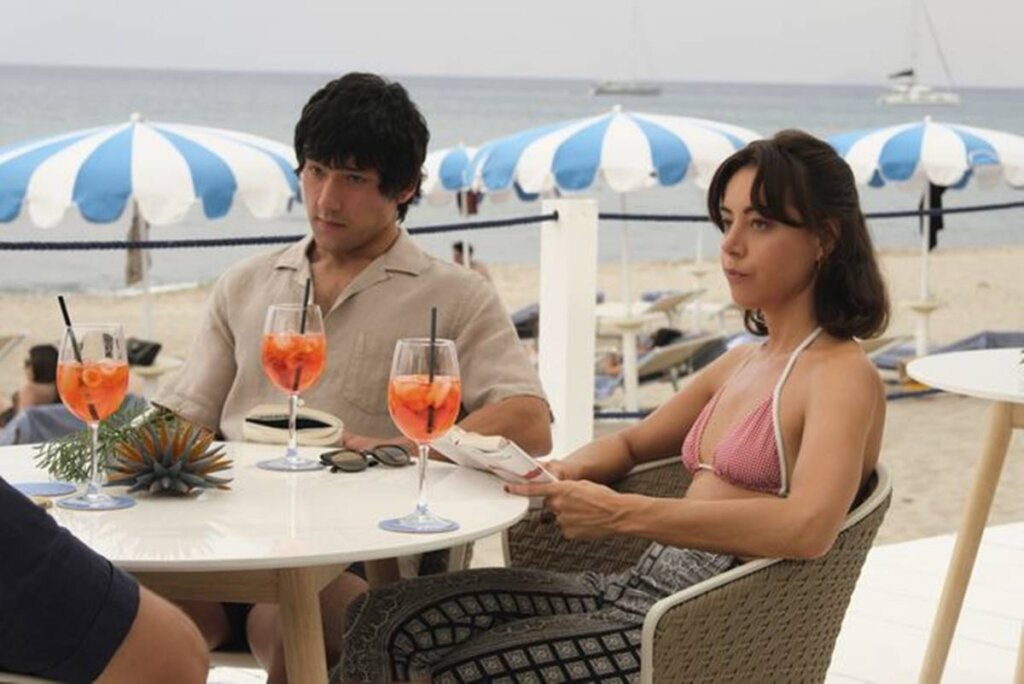The White Lotus: The Secrets of Its Success


Written and verified by the psychologist Valeria Sabater
If Agatha Christie was still around and a millennial series addict, she’d enjoy the latest HBO hit. It’s a show in which we see a number of wealthy people spending their vacations in an idyllic resort. Indeed, it’s reminiscent of many of Christie’s works. It’s also a reflection of society itself, one in which tragic and unexpected deaths often occur.
It could be said that The White Lotus has a great deal in common with a soap opera. It’s a production that many adore and a few can’t stand due to the fact that the characters are often pushed to the limits of believability. However, that’s what satire is all about. An often exaggerated and uncomfortable reflection of real themes that we all recognize.
It’s immaculately written by screenwriter, Mark White who never misses a beat. He knows how to make us laugh as well as feel repulsed, fascinated, and even contemptuous at the same time. The action moves from poetic to hilarious in a matter of seconds. It’s a series that’s won numerous Emmy awards and has been exalted by both audiences and critics alike.
So, what’s it all about?
“It’s like we’re all entertaining ourselves while the world burns, right?”
-The White Lotus, Second season-

The White Lotus
There’ve now been two seasons of The White Lotus and the plot is almost always the same: the vacations of a group of millionaires. The first took place in a Hawaiian resort. In it, we witnessed a white-dominated high society unconsciously dominated by classism and even imperialism. It traced a series of micro-histories that all ended in dramatic events.
In the second season, we travel to exuberant Sicily, where the hotel chain has another esteemed hotel. On this occasion, the plot focuses on the anatomy of sexuality and emotional relationships in all their guises. The way in which the light and dark of human relationships are approached is both shocking and funny at the same time. However, discomfort is the eternal leitmotif, which is found in each character, story, and situation.
Pampered lives that we morbidly observe
The White Lotus feeds one of the most powerful human drives: curiosity. Indeed, most of us love to look through the keyhole and see how the other half live. Money not only gives these individuals power but also allows them to occupy spaces that are inaccessible to most of us. As viewers, we suddenly become onlookers to their secrets and personal dramas.
From the first moment, we witness the crudest situations and experiences. One of the most notable and paradoxical characters is Tanya McQuoid. She’s a middle-aged woman who inherited her father’s fortune and who has as many traumas as zeros in her bank account.
Bizarre, clueless, spoiled, manipulable, and tragic, she only seems to have one need in life: to be loved. Through both seasons, we watch her commit despicable deeds, make bad decisions, and portray the most vivid example of superficiality. Despite this, she’s one of the public’s favorite characters by far.
The rich can be unhappy
Mark White’s series provides an answer to one of those eternal questions: what would life be like if money weren’t an issue? In fact, the first thing we discover in The White Lotus is that money doesn’t bring happiness and the rich suffer many of the same problems as us.
One example occurs in the field of love. We all know that relationship problems often surface during vacations. In the second season, we meet two young couples who’ve decided (reluctantly) to share their vacation at the Sicilian resort.
Layer by layer, the weight of unhappiness, sexuality, mistrust, and moral complexity of these four individuals are revealed. It’s important to note that all the characters are both heroes and villains at the same time. None is an example of virtue. That said, despite their dark sides, it’s easy to empathize (or at least understand) every one of them.
“The White Lotus” invites social comparison. We view the lives of millionaires and discover that we share their same personal dramas and needs.

Characters who, despite everything, survive
In The White Lotus, there’s disaster and chaos at every turn. We often anticipate relationship breakups that, in the end, don’t happen. We glimpse disasters and possible deaths that don’t materialize. When most of the protagonists leave the resort, they’re all doing a little better than when they arrived. They carry their learnings and discoveries in their suitcases.
Also, beyond the super-rich characters are the less fortunate who try to obtain benefits from the former. In the second season, we meet two young escorts, Lucia and Mia, who have emerged victorious after carrying out a subtle but skillful deception. However, those who try to deceive Tanya McQuoid don’t tend to fare so well.
As we mentioned earlier, Agatha Christie would’ve been fascinated by this series. Although most of the protagonists end up returning to their ostentatious but empty existences, some don’t survive.
As in real life, drama clouds the beauty of every idyllic setting. This reminds us, not only of the futility of humanity but the fact that death itself is often the product of the most ironic of chances.
If Agatha Christie was still around and a millennial series addict, she’d enjoy the latest HBO hit. It’s a show in which we see a number of wealthy people spending their vacations in an idyllic resort. Indeed, it’s reminiscent of many of Christie’s works. It’s also a reflection of society itself, one in which tragic and unexpected deaths often occur.
It could be said that The White Lotus has a great deal in common with a soap opera. It’s a production that many adore and a few can’t stand due to the fact that the characters are often pushed to the limits of believability. However, that’s what satire is all about. An often exaggerated and uncomfortable reflection of real themes that we all recognize.
It’s immaculately written by screenwriter, Mark White who never misses a beat. He knows how to make us laugh as well as feel repulsed, fascinated, and even contemptuous at the same time. The action moves from poetic to hilarious in a matter of seconds. It’s a series that’s won numerous Emmy awards and has been exalted by both audiences and critics alike.
So, what’s it all about?
“It’s like we’re all entertaining ourselves while the world burns, right?”
-The White Lotus, Second season-

The White Lotus
There’ve now been two seasons of The White Lotus and the plot is almost always the same: the vacations of a group of millionaires. The first took place in a Hawaiian resort. In it, we witnessed a white-dominated high society unconsciously dominated by classism and even imperialism. It traced a series of micro-histories that all ended in dramatic events.
In the second season, we travel to exuberant Sicily, where the hotel chain has another esteemed hotel. On this occasion, the plot focuses on the anatomy of sexuality and emotional relationships in all their guises. The way in which the light and dark of human relationships are approached is both shocking and funny at the same time. However, discomfort is the eternal leitmotif, which is found in each character, story, and situation.
Pampered lives that we morbidly observe
The White Lotus feeds one of the most powerful human drives: curiosity. Indeed, most of us love to look through the keyhole and see how the other half live. Money not only gives these individuals power but also allows them to occupy spaces that are inaccessible to most of us. As viewers, we suddenly become onlookers to their secrets and personal dramas.
From the first moment, we witness the crudest situations and experiences. One of the most notable and paradoxical characters is Tanya McQuoid. She’s a middle-aged woman who inherited her father’s fortune and who has as many traumas as zeros in her bank account.
Bizarre, clueless, spoiled, manipulable, and tragic, she only seems to have one need in life: to be loved. Through both seasons, we watch her commit despicable deeds, make bad decisions, and portray the most vivid example of superficiality. Despite this, she’s one of the public’s favorite characters by far.
The rich can be unhappy
Mark White’s series provides an answer to one of those eternal questions: what would life be like if money weren’t an issue? In fact, the first thing we discover in The White Lotus is that money doesn’t bring happiness and the rich suffer many of the same problems as us.
One example occurs in the field of love. We all know that relationship problems often surface during vacations. In the second season, we meet two young couples who’ve decided (reluctantly) to share their vacation at the Sicilian resort.
Layer by layer, the weight of unhappiness, sexuality, mistrust, and moral complexity of these four individuals are revealed. It’s important to note that all the characters are both heroes and villains at the same time. None is an example of virtue. That said, despite their dark sides, it’s easy to empathize (or at least understand) every one of them.
“The White Lotus” invites social comparison. We view the lives of millionaires and discover that we share their same personal dramas and needs.

Characters who, despite everything, survive
In The White Lotus, there’s disaster and chaos at every turn. We often anticipate relationship breakups that, in the end, don’t happen. We glimpse disasters and possible deaths that don’t materialize. When most of the protagonists leave the resort, they’re all doing a little better than when they arrived. They carry their learnings and discoveries in their suitcases.
Also, beyond the super-rich characters are the less fortunate who try to obtain benefits from the former. In the second season, we meet two young escorts, Lucia and Mia, who have emerged victorious after carrying out a subtle but skillful deception. However, those who try to deceive Tanya McQuoid don’t tend to fare so well.
As we mentioned earlier, Agatha Christie would’ve been fascinated by this series. Although most of the protagonists end up returning to their ostentatious but empty existences, some don’t survive.
As in real life, drama clouds the beauty of every idyllic setting. This reminds us, not only of the futility of humanity but the fact that death itself is often the product of the most ironic of chances.
This text is provided for informational purposes only and does not replace consultation with a professional. If in doubt, consult your specialist.







